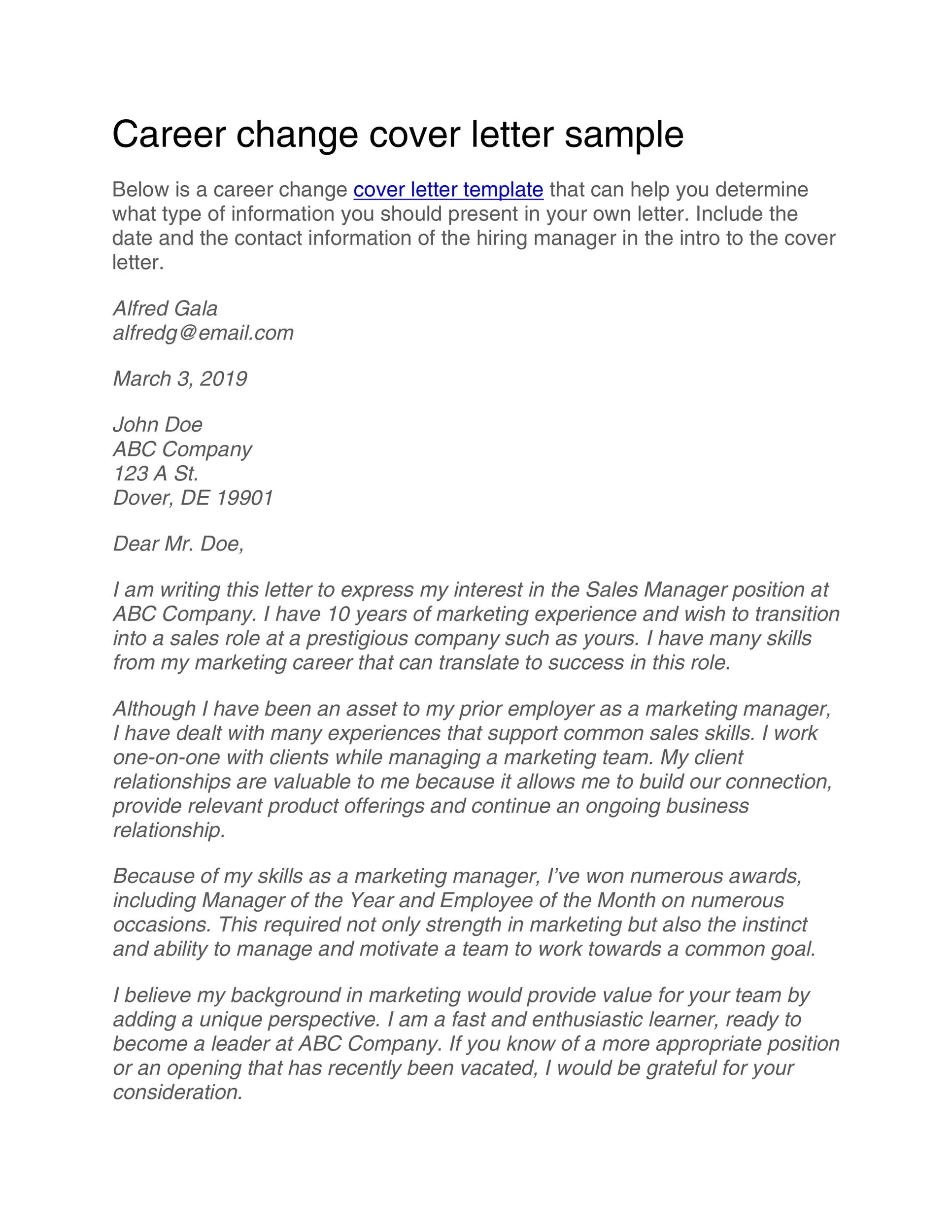Why a New Career Cover Letter Matters
Changing careers can be a significant shift. It requires not only a desire for something new, but also a strategic approach to presenting yourself. A cover letter is a critical part of that strategy, especially when you’re aiming for a new career path. Unlike a resume, which primarily lists your past experiences, a cover letter allows you to shape a narrative that explains why your skills and experiences, even if not directly related, make you a great fit for the new role. It’s an opportunity to address the career change head-on, acknowledge any gaps, and convincingly demonstrate how your previous background is relevant. By showing the employer why you’re a suitable fit, you’re providing that crucial edge that sets your application apart from the competition. Remember, it’s your first opportunity to impress, so don’t underestimate its impact.
Highlighting Transferable Skills
When you’re making a career change, highlighting your transferable skills is paramount. These are the abilities and competencies you’ve developed in previous roles, education, or personal endeavors that can be applied to your new career field. Think of skills like problem-solving, communication, leadership, project management, or even customer service. If your background is in a different industry, focus on how those skills apply to the new role. For instance, if you’re switching from retail management to project coordination, you can emphasize your ability to manage multiple tasks, meet deadlines, and communicate with various stakeholders. This approach helps demonstrate that you bring valuable assets to the table. In your cover letter, provide specific examples of how you’ve used these skills to achieve positive outcomes in the past. This is not just about making claims; it’s about offering verifiable proof of your capabilities.
Identifying Skills and Experience
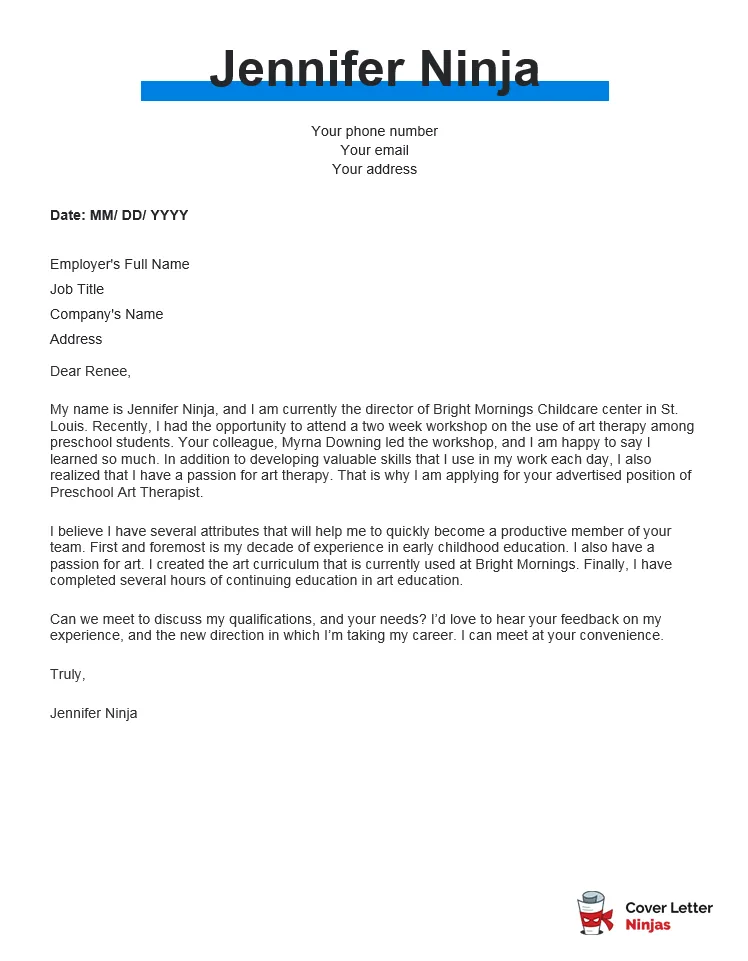
The first step in highlighting transferable skills is to identify them. This involves a careful assessment of your past experiences and skills. Start by reviewing the job description and pinpointing the key skills and qualifications required by the employer. Then, make a list of your own skills, experiences, and accomplishments, irrespective of the job or industry. Compare these two lists to find any overlaps. This is where your transferable skills come to light. Don’t limit yourself to skills acquired through work. Think about skills you’ve gained through volunteering, hobbies, or personal projects. Always provide concrete examples of how you’ve used each skill. This enables the hiring manager to understand how you can apply those skills to the new role. Use this as the basis to build the narrative of your cover letter, ensuring that your strengths and capabilities align with the employer’s needs.
Tailoring Your Letter to the Job
Sending out a generic cover letter for a new career is like sending an unaddressed letter – it is likely to go straight to the trash. To increase your chances of standing out, you must tailor each cover letter to the specific job and company. This demonstrates to the employer that you have taken the time to understand their needs and are genuinely interested in the opportunity. Carefully read the job description and identify the key requirements. Then, align your experience and skills with those requirements by providing specific examples of how you’ve used them in the past. This level of personalization tells the employer that you are serious about the position and have considered how your skills and experience can contribute to their organization. Remember, customization is the key. This can improve the impression on the hiring manager.
Researching the Target Job and Company
Before you start writing your cover letter, conduct thorough research on the company and the specific job role. This shows that you’re not just another applicant, but a candidate who is genuinely interested in their organization. Explore the company’s website, social media profiles, and any recent news or articles about them. Learn about their mission, values, products or services, and their recent achievements or projects. This information provides valuable insights that you can incorporate into your cover letter, showing that you understand their goals and their culture. If possible, identify the hiring manager or the team you’ll be working with. Knowing these details will allow you to further tailor your letter. Demonstrate that you have a clear understanding of the company. This extra effort can increase your application’s chances of success.
Showcasing Your Enthusiasm and Adaptability
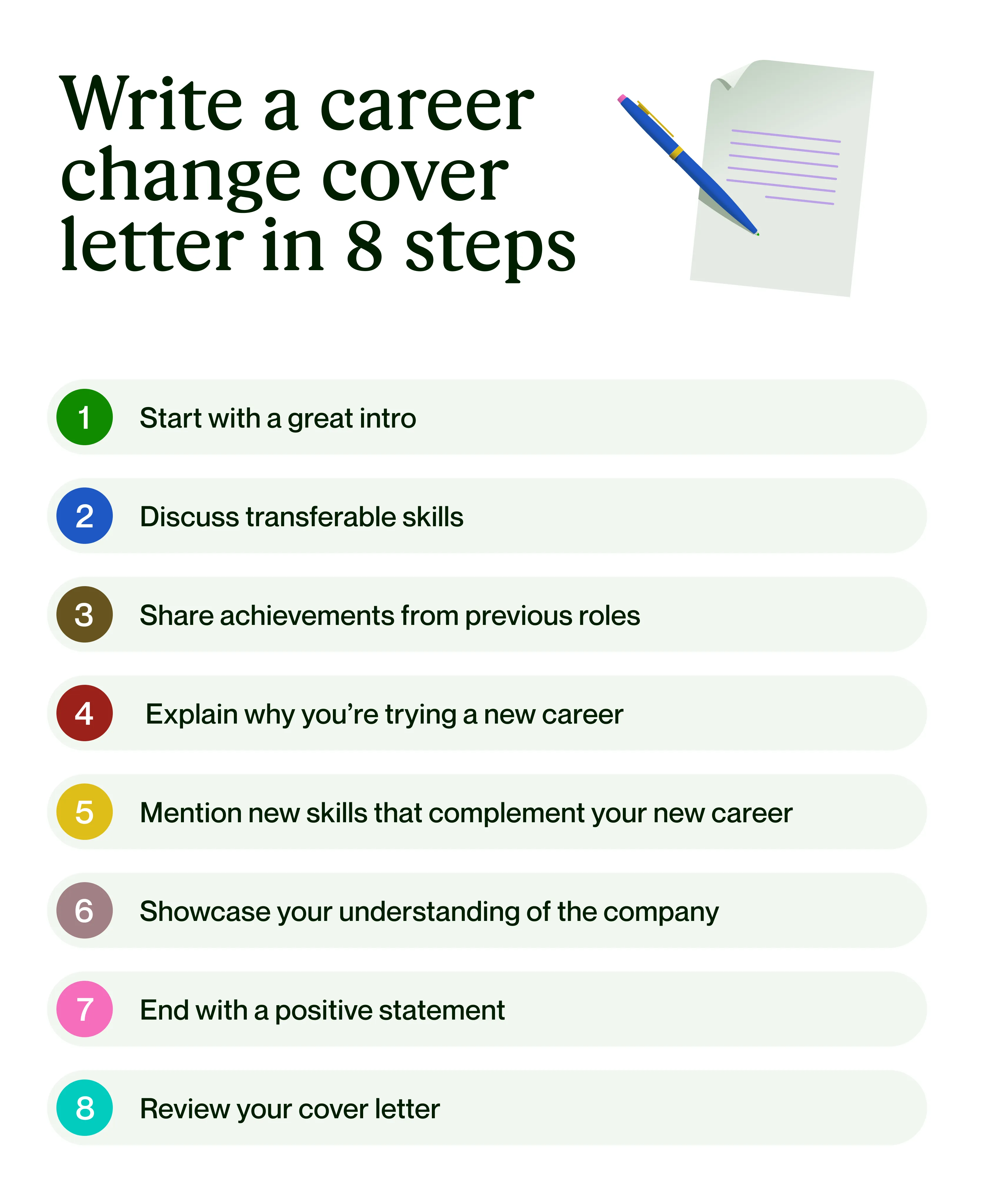
When seeking a new career, it is vital to display your enthusiasm and adaptability. Employers are looking for candidates who are excited about the opportunity and are willing to embrace new challenges and learn quickly. In your cover letter, express your genuine interest in the role and the company. Share what excites you about the opportunity, and show your passion for the industry or field. Highlight any steps you’ve taken to prepare for the career change. It can include relevant courses, certifications, or professional development activities. Emphasize your ability to adapt to new environments and learn quickly. This will demonstrate to the employer that you are motivated. Conveying your enthusiasm and adaptability can significantly improve your chances of securing an interview. It tells the employer that you are ready to take on the challenge.
Adapting Your Cover Letter Format
The format of your cover letter is a critical component of its overall impact. A well-formatted cover letter is visually appealing and easy to read. Start by choosing a professional font, such as Arial or Times New Roman, and keeping the font size between 10 and 12 points. Break up large blocks of text with paragraphs and use headings to organize your thoughts. Your cover letter should typically be concise, ideally limited to one page. Use clear, concise language, and avoid jargon. It’s essential to ensure there are no formatting errors. Formatting errors can make your cover letter look unprofessional. Check for consistency throughout the document. Adapting the format to be clean and readable can dramatically influence the reader’s perception of your application. These are essential elements of a good cover letter.
Formatting Your Cover Letter for Impact
The structure of your cover letter can significantly impact the impression you make. Begin with a professional heading that includes your contact information, the date, and the recipient’s details. Address the hiring manager by name if possible. Use a clear and engaging introduction to state the position you are applying for and why you are interested. The body of the letter should be organized into well-defined paragraphs. Each should highlight your relevant skills, experience, and achievements. Use bullet points or numbered lists to make the information easy to scan. Conclude with a strong conclusion, restating your interest in the role. Include a call to action, such as requesting an interview. Ensure that you choose your words carefully. Make sure each section contributes to your application. These elements are critical to a successful letter.
Quantifying Achievements for a New Career
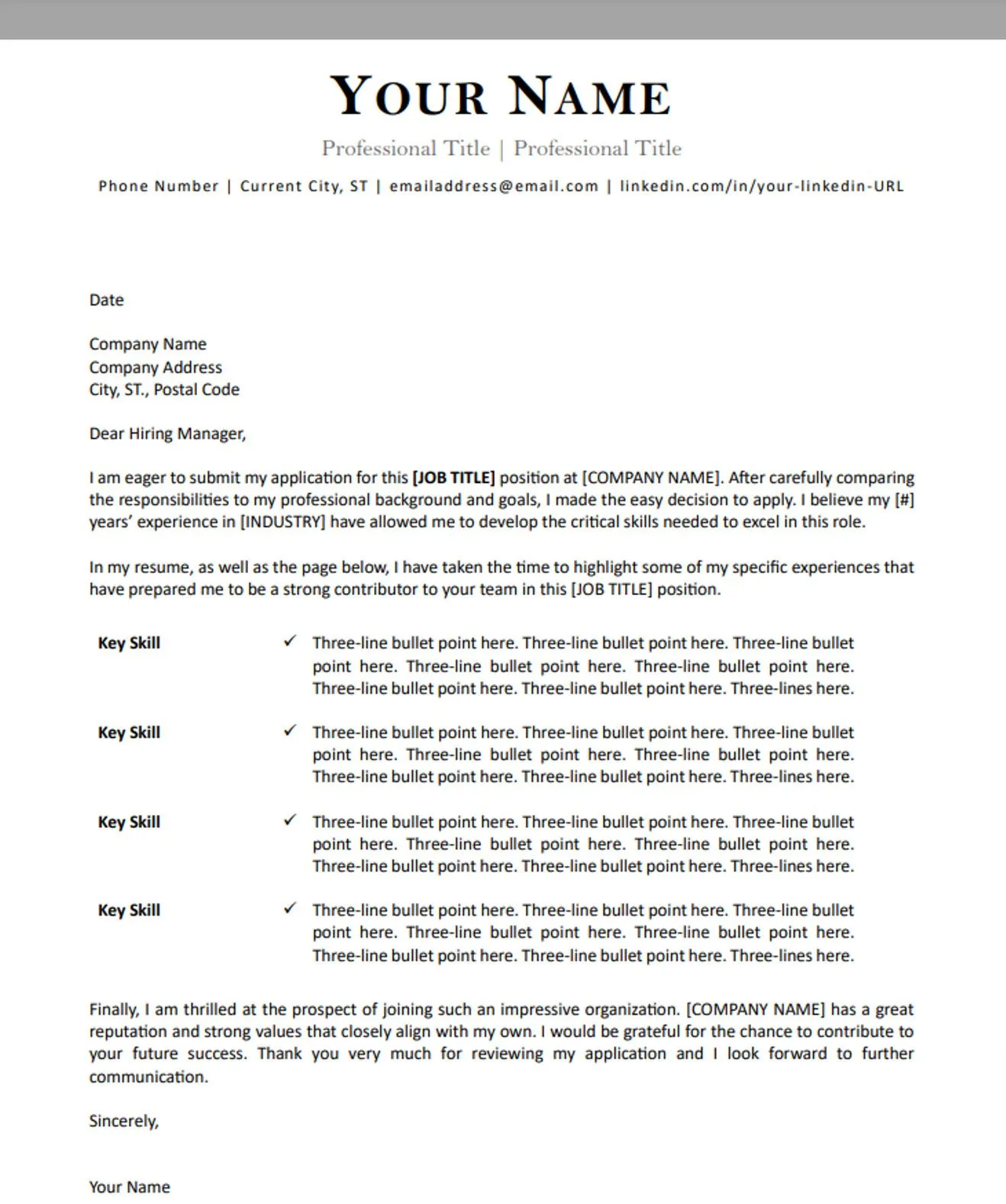
Quantifying achievements is especially important when writing a cover letter for a new career. Since your experience may not directly align with the requirements of the new role, it’s essential to demonstrate the impact you’ve made in previous roles. This provides concrete evidence of your skills and capabilities. Instead of making vague claims, support your statements with numbers and data. For instance, instead of saying that you improved customer satisfaction, state that you increased customer satisfaction scores by 15% in six months. If you managed projects, mention how many projects you completed on time and within budget. Quantifying your achievements proves that you’re results-oriented. Use the STAR method (Situation, Task, Action, Result) to highlight your accomplishments. This provides context and helps you show the actions you took and the impact.
Using Numbers to Demonstrate Accomplishments
Numbers are powerful in demonstrating your accomplishments because they provide concrete evidence of your skills. To effectively use numbers, review your past job experiences and identify achievements that can be quantified. This could involve metrics like revenue generated, costs saved, projects completed, customers served, or processes improved. Use specific figures to illustrate your contributions. For instance, you might say, “Reduced operational costs by 10%” or “Managed a team of 15 employees.” Quantifying your achievements transforms vague statements into tangible results. By including specific examples and using numbers in your cover letter, you’re showing potential employers the actual value you brought to the table. Use those accomplishments to increase the chances of making a great impression.
Writing a Strong Opening and Closing
The opening and closing are crucial parts of your cover letter. The introduction grabs the reader’s attention and sets the tone, while the conclusion reiterates your interest and calls for action. In the opening, be concise and direct. Clearly state the position you are applying for and explain why you’re interested. You can mention where you found the job posting and briefly state your key skills or experiences relevant to the role. Make your tone enthusiastic and professional. For the closing, restate your interest, and express your eagerness for the opportunity. Thank the reader for their time and consideration and include a call to action. This could be a request for an interview. End with a confident and professional closing, such as “Sincerely” or “Best regards.” These components provide the framing of your application, setting the stage.
Crafting a Compelling Introduction
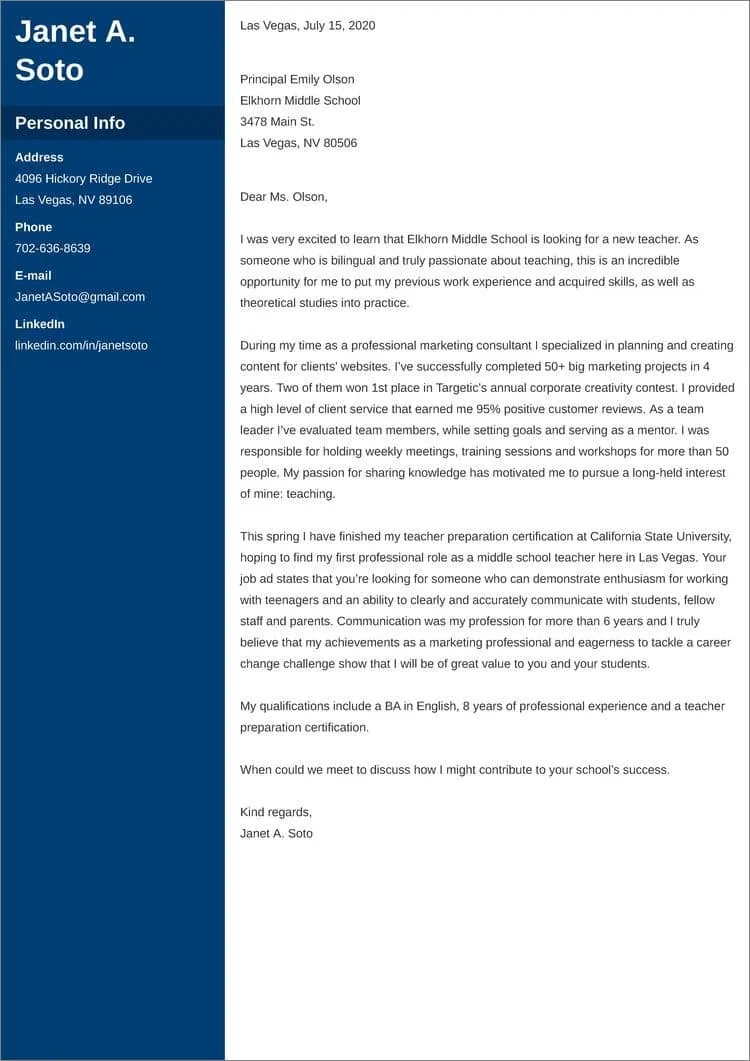
Your introduction is your chance to grab the reader’s attention and make them want to learn more. Avoid generic introductions that merely repeat information from your resume. Instead, personalize your introduction to the job and the company. You can mention something specific that interests you about the role, share how your values align with the company’s, or highlight a key skill that makes you a good fit. Start strong by showing your enthusiasm for the opportunity. State where you found the job posting. Keep your introduction concise and focused. The goal is to convey your interest and state why you’re a strong candidate. A well-crafted introduction helps set the tone for a successful application.
Concluding with Confidence and a Call to Action
The conclusion is your final opportunity to make a lasting impression. Use this section to restate your interest in the role and express your enthusiasm for the opportunity to discuss your qualifications further. Thank the reader for their time and consideration. Include a clear call to action, such as requesting an interview. Ensure your closing is confident and professional. Avoid clichés, and instead, reiterate your key qualifications, and clearly state that you are eager to learn more. A well-written conclusion helps the hiring manager remember you and strengthens your application. The conclusion can increase your chances of making a great impression.
Proofreading and Editing Your Cover Letter
Proofreading and editing are crucial for every cover letter, and especially so when you’re changing careers. It ensures that your letter is professional and free of errors. Take the time to carefully review your cover letter for any typos, grammatical errors, or inconsistencies. Read it aloud to catch any awkward phrasing or sentences that don’t flow well. Make sure your contact information is accurate. Consider using a spell checker and grammar checker. If possible, have a friend, family member, or career advisor review your cover letter for feedback. A well-proofread and edited cover letter demonstrates your attention to detail and professionalism, and significantly increases your chances of making a positive impression. It’s a critical step in the job application process.
Ensuring Accuracy and Professionalism
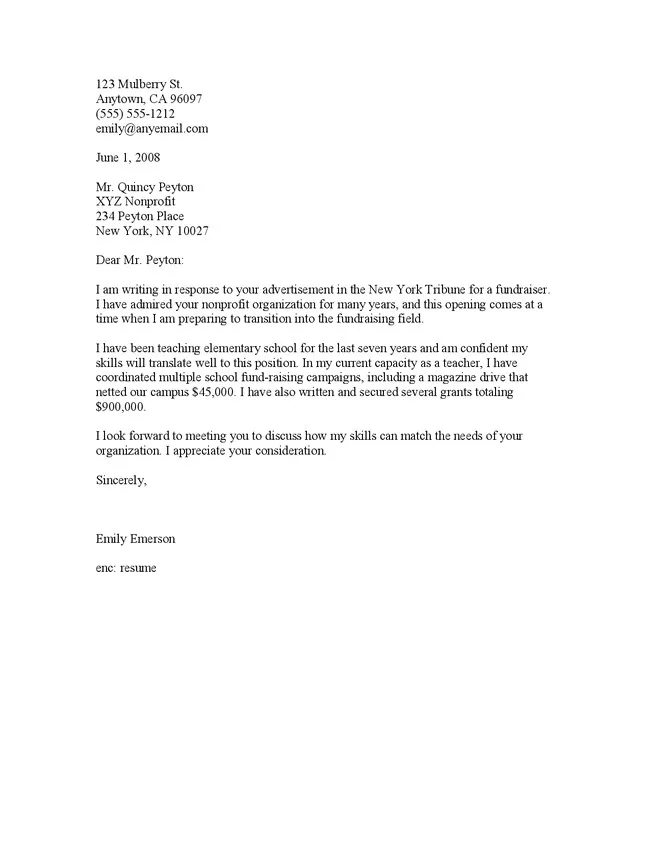
Accuracy and professionalism are two of the most important aspects of an effective cover letter. Before submitting your cover letter, double-check all the information for accuracy. Verify the company’s name, the hiring manager’s name, and the job title. Ensure that all your contact information is up-to-date and correct. Pay close attention to the tone of your letter. Ensure it’s professional and in line with the company’s culture. Avoid using slang, colloquialisms, or overly casual language. Maintain a consistent tone throughout the letter. Your writing style should be clear, concise, and easy to understand. Make sure the format is consistent and easy to read. By paying attention to these details, you demonstrate to potential employers that you are detail-oriented. This can significantly increase the chances of your application getting noticed.
